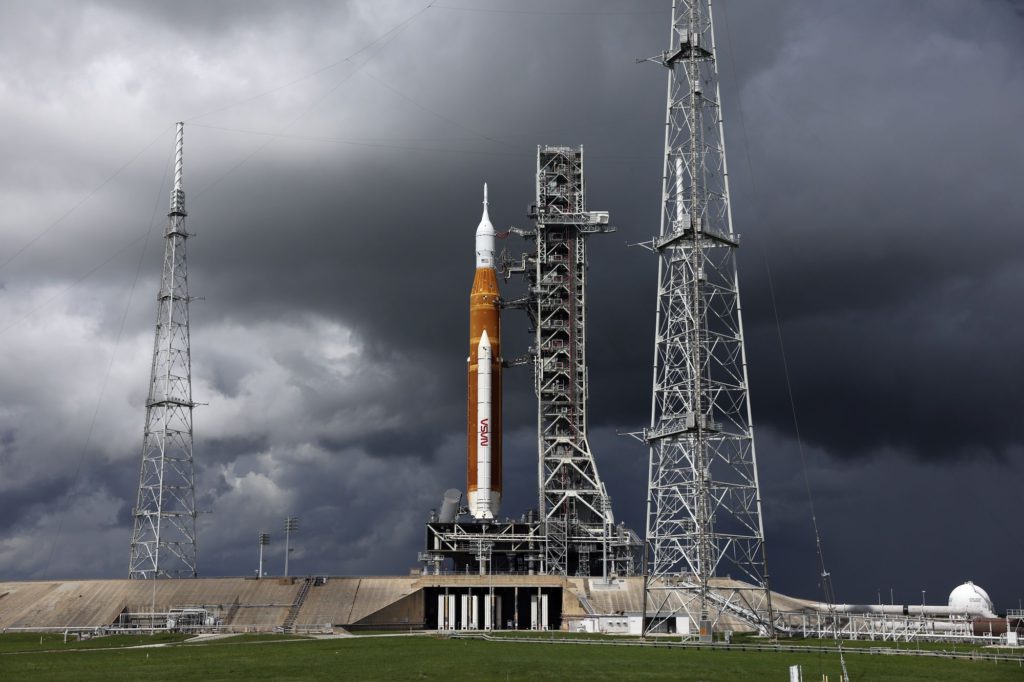NASA, hoping to launch its new Space Launch System rocket moonward later this month, completed a tank fueling test Wednesday after grappling with two leaks and technical issues.
(Bloomberg) — NASA, hoping to launch its new Space Launch System rocket moonward later this month, completed a tank fueling test Wednesday after grappling with two leaks and technical issues.
“All of the objectives that we set out to do, we were able to accomplish today,” said Charlie Blackwell-Thompson, launch director for Artemis I.
Still, Blackwell-Thompson did not confirm a launch date for the agency’s Atemis I mission, which will mark the debut of the massive SLS. The earliest NASA could launch is Sept. 27.
“I don’t like to get ahead of the data. And so I’d like the team to have the opportunity to go look at it to see if there are changes we need to make to our loading procedure, our timelines,” she said.
A NASA spokesman characterized the first leak as “very manageable” after remediation steps were taken but said the malfunction still had “a lot of folks scratching their heads.” Later in the day, a second leak appeared but NASA was able to complete the test.
Early during the test, a hydrogen leak sprung up around 10:05 a.m. Eastern time, as engineers loaded the SLS rocket with propellant. They were able to get the leak under control after pausing hydrogen fueling and doing some troubleshooting by tweaking pressures and temperatures. A second leak also cropped up but eventually the team was able to full load the rocket with propellant. The agency later announced it had completed fueling.
The leaks may still pose concerns for NASA’s engineers. If today had been a launch attempt, NASA would not have been able to fly. The leaks periodically increased and decreased throughout the test, and it was not immediately clear what caused the fluctuations.
Wednesday’s test filled the SLS with super cold propellant, simulating fueling the rocket the day of a launch. The first hydrogen leak that arose today was similar to the one that caused the cancellation of NASA’s second launch attempt of SLS on Sept. 3.
Following that scrubbed launch, NASA opted to replace the components that caused the leak while the SLS remained on the launchpad, rather than send it back to its hangar, which would have resulted in a longer delay.
NASA isn’t completely sure what caused the original leak, but while investigating the hardware, engineers found signs that debris from an unknown foreign object may have been to blame. For Wednesday’s test, NASA also used what its officials referred to as a “kinder, gentler” approach to loading propellants, which entailed slowly raising hydrogen pressure during the start of the procedure.
The Space Launch System, once cleared for launch, will send an uncrewed Orion capsule around the moon. It’s the first major launch in NASA’s Artemis program, which aims to send the first woman and the first person of color to the moon as early as 2025. The SLS will be the primary vehicle that will send people to the vicinity of the moon in the future, riding inside the Orion crew capsule. Artemis I is meant to show that SLS and Orion work as intended.
More stories like this are available on bloomberg.com
©2022 Bloomberg L.P.











